I used to believe QR codes were useless marketing gimmicks.
Then I visited Japan in 2011 and QR codes were everywhere. You could see them on the walls of skyscrapers in Tokyo, on product packaging - and even on every tiny 1x3-inch ads in the magazines. Usually it's time to re-evaluate an opinion once you see that an large, smart group of people have an opposing point of view. So I re-evaluated.
In this blog I would like to tell you what the QR-Code is (in case you're new to it), why it's great, and how to make bad and good QR-codes (as it's easy to botch up).
Note 1: This is part 5 of my series on creating great responsive/mobile webs with DNN.
Note 2: To try examples yourself, install the newest 2sxc and the
QR-Code App.
What is a QR Code
- QR stands for Quick Response
- it's a square pattern of dots
-
...containing text - like "I Love You" (red code) or http://2sxc.org (black code)

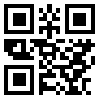
- it's meant for scanning with a smart phone…
- ...so that the phone can then show you the text…
- ...or try to detect if the text is special - like a URL and then browse to that site
- it's often called a 2D (2-dimensional) Barcode
- thanks to special markers, you can turn, flip and mirror it, and a good scanning App will still correctly read it
- it has various technical specs to ensure error correction, version numbering and more
-
more text require more pixels. The Code to the left has http://2sxc.org in it, whereas the other one says http://2sexycontent.org/en/Apps/Details?AppGuid=55e57a39-e506-416a-aed0-1c7459d31e86
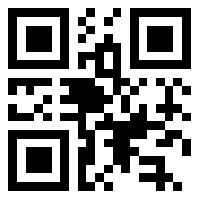
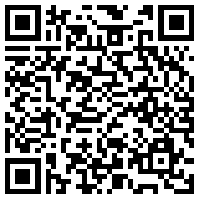
What are QR-Codes Good For?
- Quickly bridging the Gap between offline media (usually magazines, brochures, posters) and online media
-
Help with data-input - like with sweepstakes-codes that would require typing. We created a sweepstakes-system for Revant which would automatically transfer 8 characters if scanned. The Sweepstakes looks like this (note that the code won't work any more, because they are 1x use only): arsa-aaha (http://revant.com/qr-arsa-aaha)

- For hidden text (like quiz-answers in a magazine). We used this for a riddles/sudoku book in 2012
-
For connecting products to their web site and/or manual
For connecting unique items (the telephone-pole #20503 in your city) to a maintenance site
Some very common mistakes
- QR-Code pointing to a non-mobile web page. This is simply dumb, because QR codes are only used on mobile devices, nobody scans them with a PC
- QR-Codes pointing to a page containing flash-content
- Using QR-Codes in sabotage-prone materials (like political posters in public places - these are often kidnapped)
- Using QR-Codes to contain vCards - this would work and would save you the typing, BUT in reality many devices including the iPhone don't properly scan this
Size Matters
- Short URL result in less pixels, meaning that they are larger when printed at any specific size. More text = more dots = smaller printed pixel = harder to scan. So one of the main priorities if you want do to it right, is to make sure you have very short URLs. This creates a few simple requirements:
- Make sure you have a URL-Shortener (use one on your URL, more about that later)…
- ...and make sure that these short URLs are really short (don't use SEO-URLs)
- Know your character limits for each QR-code size
- Avoid unnecessary ballast (see best practices)
Best Practices
-
Keep the code Low-Res
This way the code has large dots and is easier to scan.
-
Keep the URL short
This way it will stay low-resolution (less dots) and increase scan reliability.
-
Use lowest error correction
QR-Codes can store the identical text in multiple ways - by adding correction-codes with which the scanning App can decipher the output - even if some parts are scratched off or covered by a logo. This sounds like a good idea, but it isn't. This code shows the QR-Code for the QR-Code DNN-App (http://2sic.com) with low error correction, the next one has high error correction. Since the right one has smaller dots it is actually harder to scan.
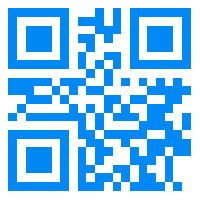
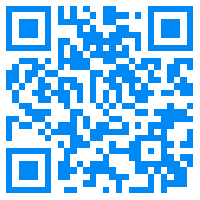
-
Do add a written URL in addition to the QR-Code
This has 2 reasons: #1 is that it shows what URL is expected to load (to prevent kidnapping), but even more important is that you could type the URL manually - for all users that don't understand the concept yet. Since your URL is very short, this won't be a problem.
-
Use your own URL-Shortener
If you are routing users to http://goo.gl/MWiIGW they cannot know where it will go - kidnapping is very likely. If your website is http://2sxc.org and your url goes to http://2sxc.org/app/qr then it obviously goes to your site.
A note about QR Code Kidnapping
QR Code Kidnapping is relevant for QR codes placed on publicly accessible places like posters. Kidnappers will replace the QR code with a URL pointing to a different location than originally intended. Most passerbys won't notice the fix and will then end up visiting a different web site. This is mostly used for pranks or for sabotaging political posters.
It's easy to avoid QR Code kidnapping. If you don't have posters, you're not affected. And if you do have posters, always ensure that you also print the url under the code, and that your URL always belongs to you (use your own URL-shortener, avoid generic http://goo.gl shorteners).
Required: Your own URL Shortener
As you can easily tell, the QR-Code itself is only part of the solution - you also need a reasonable URL-Shortener and a good way to manage this. That will be the topic of my next post.
With love from Switzerland
Daniel